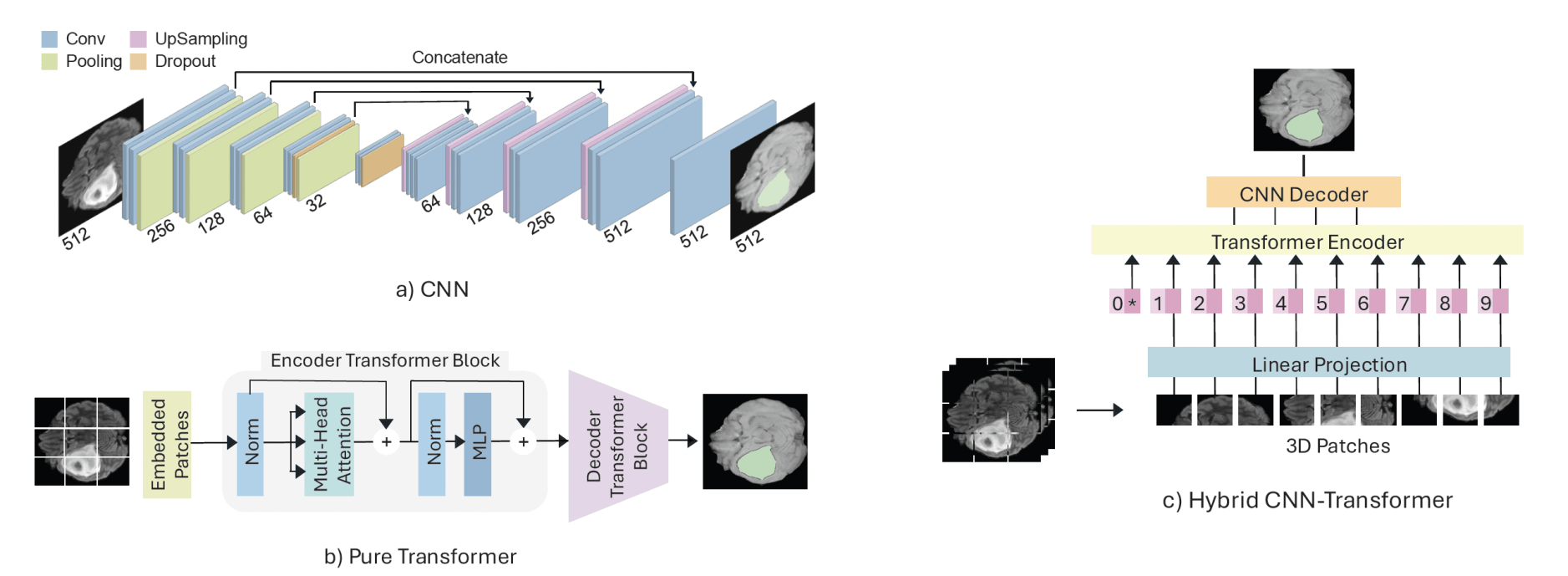
Accurate and automated segmentation of gliomas from Magnetic Resonance Imaging (MRI) is crucial for effective diagnosis, treatment planning and patient monitoring. However, the aggressive nature and morphological complexity of these tumors pose significant challenges that call for advanced segmentation techniques. This review provides a comprehensive analysis of Deep Learning (DL) methods for glioma segmentation, with a specific focus on bridging the gap between research performance and practical clinical deployment. We evaluate over 80 state-of-the-art models published up to 2025, categorizing them into CNN-based, Pure Transformer, and Hybrid CNN-Transformer architectures. The primary objective of this paper is to critically assess these models not only on their segmentation accuracy but also on their computational efficiency and suitability for real-world medical environments by incorporating hardware resource considerations. We present a comparison of model performance on the BraTS datasets benchmark and introduce a suitability analysis for top-performing models based on their robustness, efficiency, and completeness of tumor region delineation. By identifying current trends, limitations, and key trade-offs, this review offers future research directions aimed at optimizing the balance between technical performance and clinical usability to improve diagnostic outcomes for glioma patients.

Deep Learning Architectures for Glioma Segmentation. This figure illustrates the general structures of 3 primary types of deep learning methods used in glioma segmentation: (a) CNN, which utilizes layers of convolution, pooling, and upsampling for feature extraction and segmentation; (b) Pure Transformer, showcasing multi-head attention blocks for capturing global dependencies from 3D image patches; and (c) Hybrid CNN-Transformer, which combines CNN-based feature extraction with Transformer-based contextualization
A comparison of more than 80 Deep Learning methods for glioma segmentation up to 2025, providing insights into their effectiveness and efficiency.
An analysis of the number of tunable parameters of each method and their adaptability in clinical applications.
An identification of current trends and limitations within the field, along with a proposal for future research directions and suggestions for improvement.
Reference:
@article{diana2025review,
title={A Review on Deep Learning Methods for Glioma Segmentation, Limitations, and Future Perspectives},
author={Diana-Albelda, Cecilia and Garc{\'\i}a-Mart{\'\i}n, {\'A}lvaro and Bescos, Jesus},
journal={Journal of Imaging},
volume={11},
number={8},
pages={269},
year={2025},
publisher={MDPI}
}
HTML Website Generator